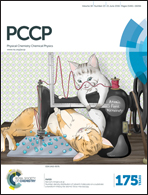An organosilane self-assembled monolayer incorporated into polymer solar cells enabling interfacial coherence to improve charge transport
Abstract
The reproducible silylation of titanium oxide (TiO2) with small molecular (dichloromethyl) dimethylchlorosilane (DCS) as the cathode buffer layer was developed to improve electron extraction. Through incorporating the DCS capping layer into polymer solar cells (PSCs), the interfacial coherence of devices could be enhanced, leading to a shift in nanocrystallite size and a smaller internal charge transport resistance. Furthermore, a TiO2/DCS combined interfacial layer could serve as both an exciton dissociation center and a charge transfer channel, which results in a reduction in the energy barrier and electron loss, improving hole-blocking and surface-state passivation in the TiO2 interfacial layer. The Kelvin probe measurements demonstrate that the employment of the DCS nanolayer decreases conduction band energy of TiO2via forming a dipole layer at the interface of TiO2 and the DCS nanolayer, which tunes the work-function of the device and ulteriorly enhances charge carrier transfer between the electrode and the active layer. As a result, the photocurrent and the fill factor of the PSCs are both increased, resulting in an increased power conversion efficiency (PCE) of 6.959%.


 Please wait while we load your content...
Please wait while we load your content...